Felipe Correa, Maynard Leon, Riley Poblete, Clayton Strange, Long Zuo, Ana Victoria Chiari, Miguel Lopez M.
Applied Research
2016
Typological Permute II examines how a comprehensive overview of the affordable housing delivery process can help redefine the provision of mass housing in Brazil and the region at large. The work explores how new models of public/private development, can provide an alternative to the ubiquitous landscape of repetitive dormitory cells by introducing more vibrant mixed income and typologically diverse residential projects.
The project departs from three specific premises: 1. The possibility to re-imagine affordable housing in South America as an opportunity to mix income.
The project departs from three specific premises: 2. The idea of expanding the residential typologies beyond the repetitive dwelling. The project specifically focuses on how different unit configurations can address the varied and constantly evolving needs of affordable housing in the region.
The project departs from three specific premises: 3. The notion that good design can significantly improve the quality of life in smaller sized units.
TYPE 1: POROUS PERIMETER
Block FAR = 1.9
3 Floors
10 UNITS, 30 BRS
81m2 gross total
54m2 gross apartment
48m2 net apartment
TYPE 2: SWITCHBACK
Block FAR = 1.4
2 Floors
12 UNITS, 18 BRS
97m2 gross total
46m2 net main apartment
19m2 net secondary unit
Key to next slide:
TYPE 3: COURTYARD
Block FAR = 1
2 Floors
7 UNITS, 14 BRS
64m2 gross total
56m2 net unit
TYPE 4: T HOUSE
Block FAR = 1.1
2 Floors
8 UNITS, 16 BRS
61m2 gross total
55m2 net unit
TYPE 5: T MIDGET TOWER
Block FAR = 1.3
3 Floors
8 UNITS, 24 BRS
69 m2 gross total
69 m2 gross apartment
61 m2 net apartment
TYPE6: T CORE BLOCK
Block FAR = 1.7
3 Floors
11 UNITS, 27 BRS
52M2 Unit A gross
64M2 Unit B gross
128M@ Unit C gross
Each unit prototype aggregates into a block with repetitive types and also hybrid blocks that mix and match the types.
Each block than gets aggregated to create a larger district while also incorporating other programs and uses.
Felipe Correa, Maynard Leon, Riley Poblete, Clayton Strange, Long Zuo, Ana Victoria Chiari, Miguel Lopez M.
Applied Research
2016
Typological Permute II examines how a comprehensive overview of the affordable housing delivery process can help redefine the provision of mass housing in Brazil and the region at large. The work explores how new models of public/private development, can provide an alternative to the ubiquitous landscape of repetitive dormitory cells by introducing more vibrant mixed income and typologically diverse residential projects.
The project departs from three specific premises: 1. The possibility to re-imagine affordable housing in South America as an opportunity to mix income.
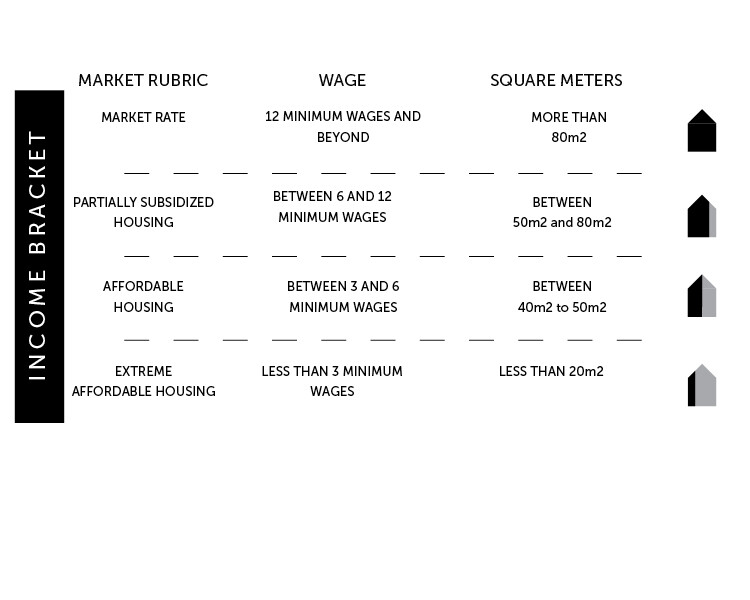

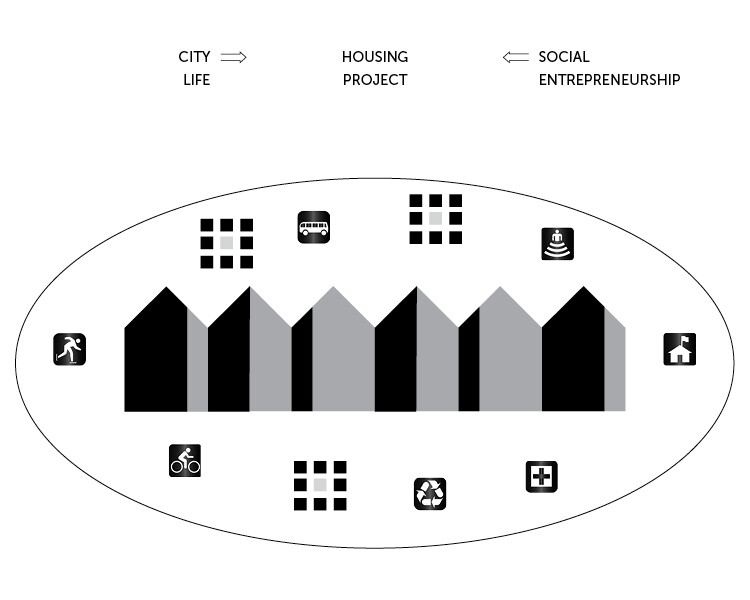
The project departs from three specific premises: 2. The idea of expanding the residential typologies beyond the repetitive dwelling. The project specifically focuses on how different unit configurations can address the varied and constantly evolving needs of affordable housing in the region.

The project departs from three specific premises: 3. The notion that good design can significantly improve the quality of life in smaller sized units.

TYPE 1: POROUS PERIMETER
Block FAR = 1.9
3 Floors
10 UNITS, 30 BRS
81m2 gross total
54m2 gross apartment
48m2 net apartment



TYPE 2: SWITCHBACK
Block FAR = 1.4
2 Floors
12 UNITS, 18 BRS
97m2 gross total
46m2 net main apartment
19m2 net secondary unit
Key to next slide:

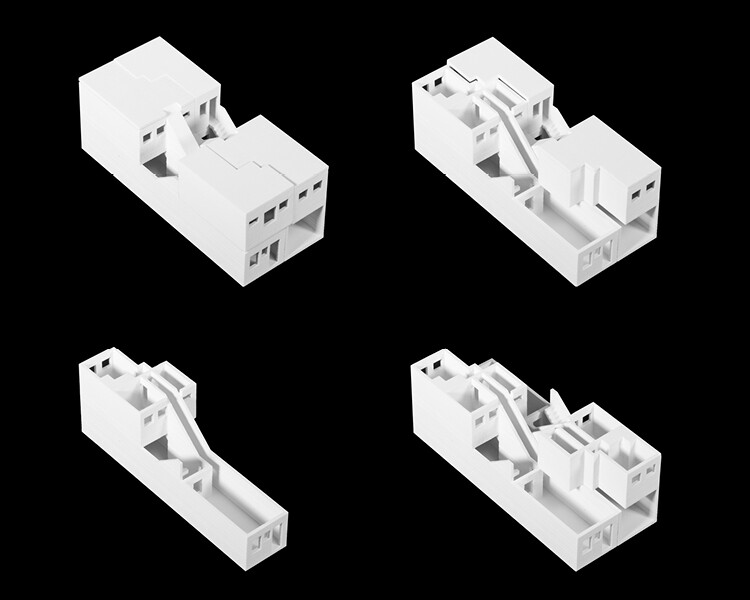
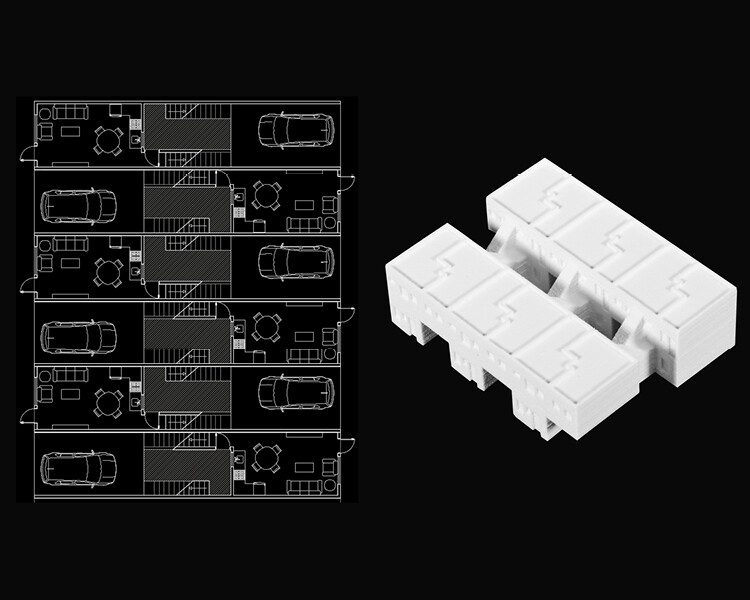
TYPE 3: COURTYARD
Block FAR = 1
2 Floors
7 UNITS, 14 BRS
64m2 gross total
56m2 net unit


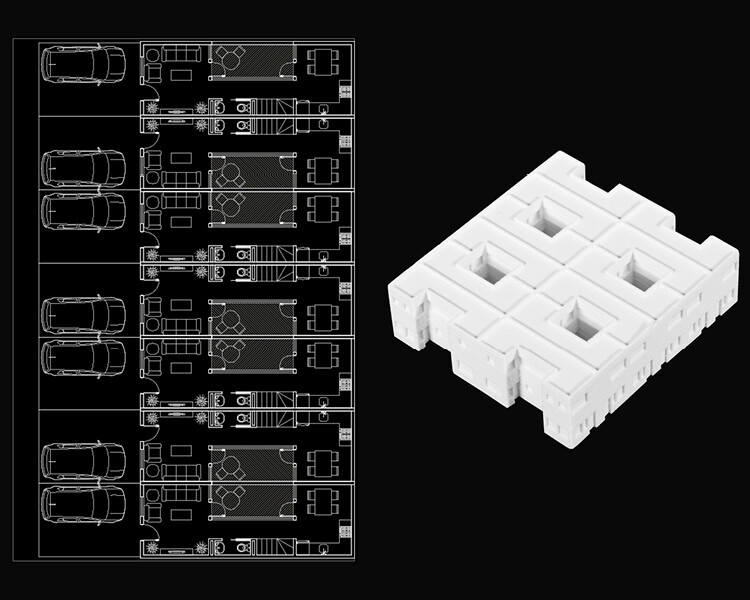
TYPE 4: T HOUSE
Block FAR = 1.1
2 Floors
8 UNITS, 16 BRS
61m2 gross total
55m2 net unit
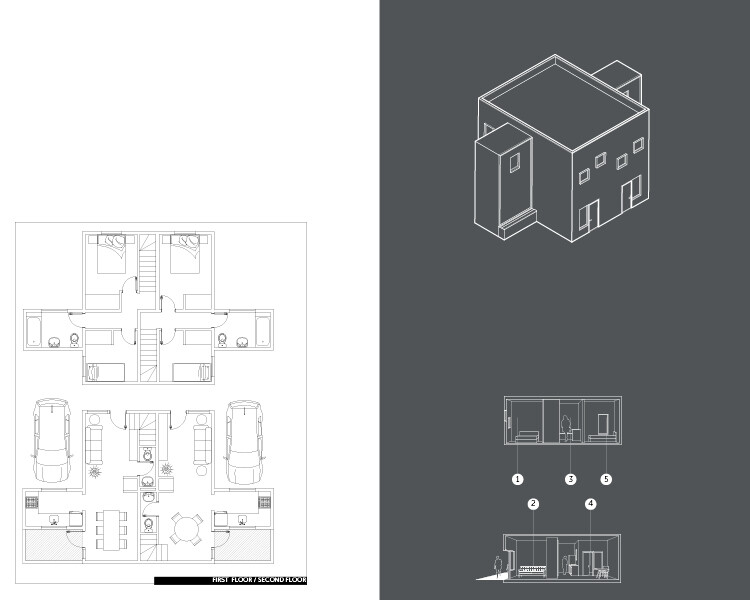


TYPE 5: T MIDGET TOWER
Block FAR = 1.3
3 Floors
8 UNITS, 24 BRS
69 m2 gross total
69 m2 gross apartment
61 m2 net apartment



TYPE6: T CORE BLOCK
Block FAR = 1.7
3 Floors
11 UNITS, 27 BRS
52M2 Unit A gross
64M2 Unit B gross
128M@ Unit C gross


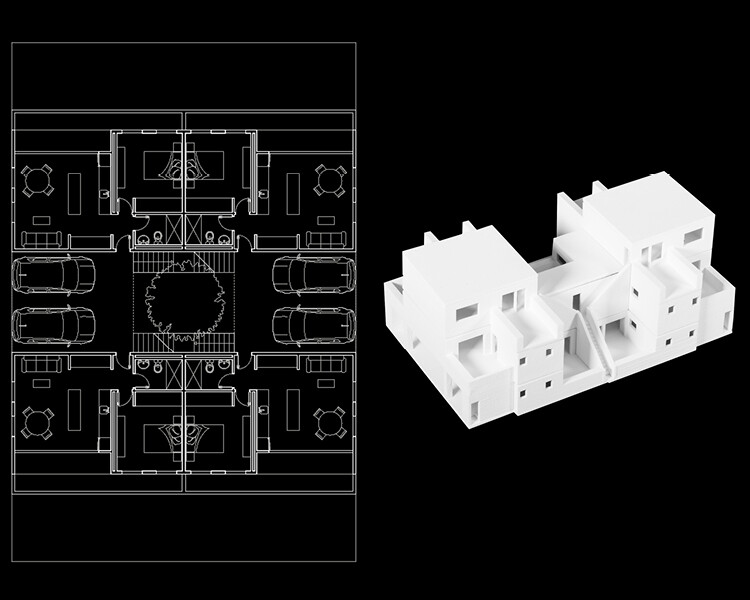
Each unit prototype aggregates into a block with repetitive types and also hybrid blocks that mix and match the types.



Each block than gets aggregated to create a larger district while also incorporating other programs and uses.
